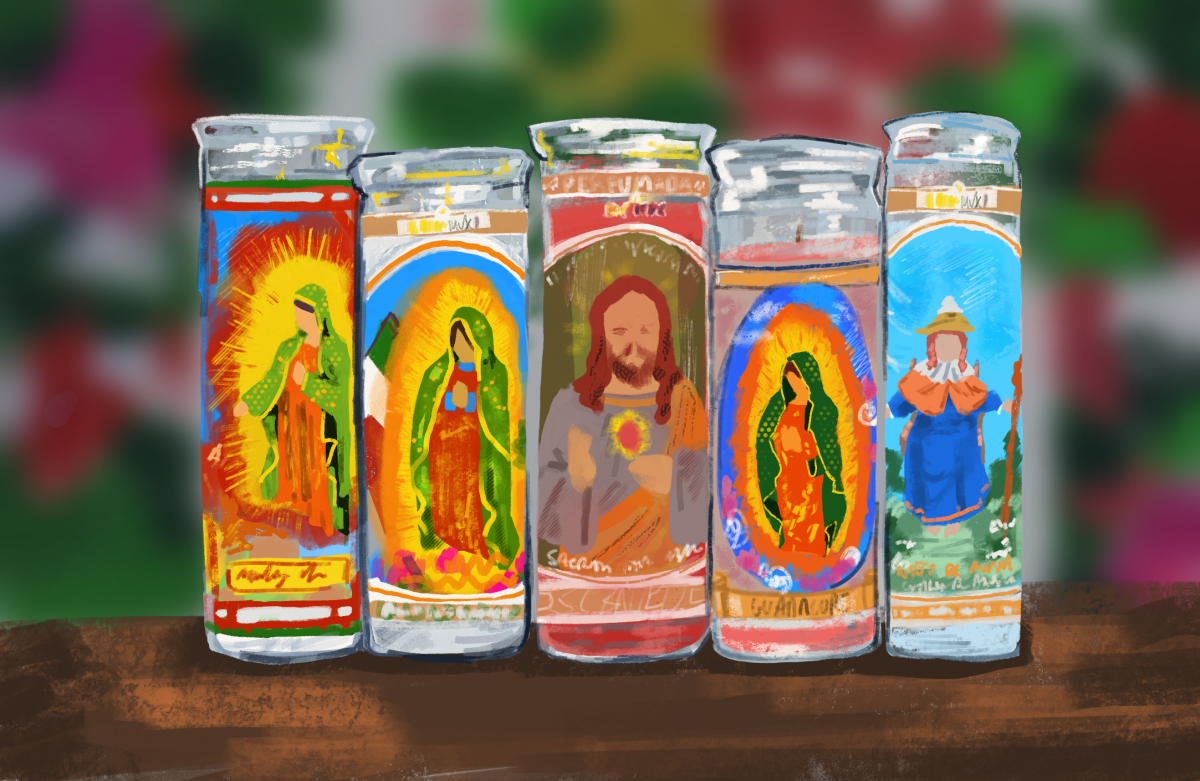Social media apps do a phenomenal job of convincing you the right outfit or aesthetic choice is the key to your aspirations. During the pandemic, I sat in my room scrolling through TikTok and Instagram, running through countless algorithms and methods of signaling my cultural interests. I eventually saw a video of a girl showcasing her new rosary beads and how perfectly they aligned with her “traditional but cool girl” aesthetic.
I soon deleted TikTok and deactivated my Instagram, shuddering to think that’s the kind of person I was aspiring to be — more nuance in the fabric on my body than the thoughts in my mind. Worse yet, that I might aspire to be fashionable by means of cultural appropriation.
Mexico contains the second largest population of Catholics in the world, but Mexican Catholicism originates from the same colonial tradition as most institutions on our side of the globe.
Spaniard colonists forced their culture onto indigenous Mexican populations, through genocide and cultural erasure, the result being the Mexican Catholic Church. Currently, 78% of Mexico’s population identifies as Roman Catholic, though according to Pew Research polls, indigenous religious practices are still common. Approximately 45% of Mexican Catholics believe in “the evil eye” and 31% believe in communication with spirits.
Mexican Catholicism is unique in the way it’s developed in spite of and alongside colonialism. What authority do we have, as Americans, to pull the prettiest and most visually pleasing aspects of this religion while simultaneously turning a blind eye to the harm it has caused?
This faith has undergone a painstaking process wrought with violence and destruction of indigenous cultures, but most people are not considering this when they buy a Bernie Sanders or Dolly Parton veladora candle for apartment decor.
If you’re regularly on the internet, you’ve probably come across a veladora with your favorite celebrity’s photo pasted on top, or maybe seen a rosary worn casually as an outfit accessory. But what you might not know, or care about, is that these “decorations” are an important part of Catholicism.
The exact origins of rosaries are debated, but their popularization is typically accredited to Spanish priest Saint Dominic. Veladoras depict the sacred heart of Jesus and are used in prayer or for other spiritual purposes.
The problem arises when non-religious people remove these items from their intended context, disrespecting the religion to which it belongs.
The celebrity prayer candle skyrocketed in popularity because people who weren’t familiar with Catholicism found them amusing. Let it be clear that this doesn’t automatically make a celebrity veladora owner a bad person. Catholicism in America is declining, so there’s a good chance that consumers are unaware of the candle’s origin. Still, it is our responsibility to educate ourselves on cultures or beliefs that are not our own.
If you’ve ever seen someone wear a rosary as a necklace, it’s important to know that that’s inherently disrespectful to those of the Catholic faith.
Rosaries are to be prayed over, not typically to be worn like jewelry. Interestingly, however, it is common in Latinx culture to wear a rosary as a symbol of their heritage. Back in the 16th century, they were used to differentiate between Protestants and Catholics. When used in its intended context, each bead is a prayer, so praying over the rosary takes some time.
Additionally, wearing a rosary commits oneself to positive behavior, so one can not do anything particularly unsavory while wearing it. If you’re not Latinx, it’s best to avoid wearing a rosary entirely, for the sake of those of the Catholic faith, as well as your own peace of mind.
Veladoras and rosaries have long been a part of Mexican Catholicism before they were mocked and will remain an important part long after the trends have died down.
To reiterate, accidentally disrespecting a culture isn’t the issue. The issue lies in continuing to disrespect a culture or faith once you know the original context of whatever you’re using as a decoration or accessory.
In 2024, we have far too much access to knowledge, declining faith or not, to continually disrespect a religion that is important to so many people, especially people of marginalized communities. Considering the violence indigenous Mexicans endured as a result of colonialism, we owe it to these populations to let them reclaim their faith in their own right.














